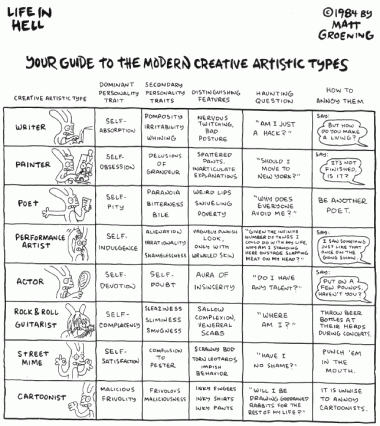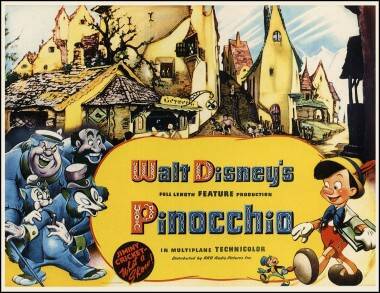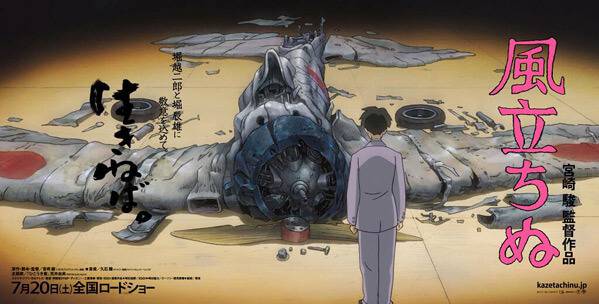Cavalier Attitude: Animation’s Just For Kids
Judging by the online reaction, I’m not the only animator puzzled by DreamWorks CEO Jeffrey Katzenberg’s statement that “We’ve never experienced this level of animation congestion in a period of time”.
It might have slightly more credibility as a reason for underperformance than Fox VP Craig Dehmel’s excuse that their “unique and a more complex story“ made it “more challenging for international audiences to discover” (because of course us unsophisticated dopes over in Europe just can’t get our heads round all this hibrow intellectual Hollywood animation and particularly the post modernist head melting multi layered hyper narrative of the existentialist allegory that was Epic), but Mr Katzenberg’s quote still bugs me on many levels.
Its not just that someone from the animation industry is actually moaning about the popularity of animation, or talking about animation like it’s a ‘genre’ in itself when it’s actually a type of filmmaking that can produce movies in any genre. For me the most irritating aspect of it is the blinkered lack of recognition that 99% of those animated films that are released fall into the same small sub genre (3D CGI) of a genre (family entertainment) of the vast universe of possibilities that is animation, and that’s possibly why people aren’t queing round the block to see every one of them.
To quote someone else from the US industry, director Henry Selick, (Coraline, James and the Giant Peach and The Nightmare Before Christmas):“It’s too homogenous. It’s way too much the same. The films aren’t really that different one from the other. Despicable Me could have been made Pixar, by DreamWorks. It’s not a great time for feature animation if you want to do something even moderately outside the formula.”
I remember In a studio I worked in years ago ,a strip from Matt Groening’s newspaper cartoon Life in Hell was pinned to the wall It was entitled Modern Artistic Creative Types and onto this someone had added the category of animator, to which was added, under the heading of ‘How to Annoy Them’ , the suggestion “Say: animation’s just for kids.”
Well that was back in the 90’s, the days when Akira was big news in the cinemas, The Simpsons was bigger news on TV and therefore animation primarily aimed at adults perhaps wasn’t such a blacklisted area for executive green lighting. Nowadays would saying ‘animation’s just for kids’ even bother the average animator,? When the most common animators ambition is to work at the Magic Kingdom of Pixar (and who, like the disciples of those other Californian cults Scientology and Apple, are prone to wail and wring their hands and flood the internet with despairing comments at anything that suggests this Magic Kingdom might resemble a commercially driven enterprise).
Now don’t get me wrong I know Pixar have made some fantastic animation features and shorts, which manage to appeal to adults as well as kids, but they are all ‘family’ films and as such their success has probably reinforced the idea, established by Disney sixty years ago, that ‘animation is just for kids’.
I say sixty years ago because I believe that this idea can be pretty much traced back to somewhere in the middle of that difficult period in Walt Disney’s psychological journey, 1937-44, not only the most incredible five year period of creativity and productivity for any animation studio in any era, a time in which they produced no less than five stunning animated features; Snow White, Pinocchio, Fantasia, Dumbo and Bambi, all classics that stand up as masterpieces to this day, but also a period when Disney was forced to abandon his ambitious ideas for animation to be a grown up, high brow medium, mostly due to the box office failures of Pinocchio and Fantasia (more about this in my book, did I mention its available at all major bookshops?).
Though its nice to see a film, Saving Mr Banks, being made about the fascinating Mr Disney, this seems to be a Tom Hanks movie played mainly for laughs. Fair enough, but it would be good to see something really tackling WD’s complex personality and based in this incredible early period.
Before the rise of Mickey, animation was considered as much for adults for children and was thought of as not a genre, but as a technique that could equally produce everything from children’s films (Lotte Reiniger’s cut out masterpieces) to racy adult aimed cartoons (Betty Boop) to the European abstract ‘visual music’ that influenced Disney’s Fantasia. Even Disney’s aforementioned early features contained many dark and powerful sequences, influenced by grown up expressionist and horror cinema, designed to produce strong emotions in adults and children alike.
After 1944 Disney didn’t release another big animated feature for six years, the anodyne Cinderella, at which point The Mouse had lost its teeth and Walt had seemingly abandoned the idea of making sophisticated material for grown ups.
The Hollywood response to all this would be that modern audiences simply don’t want different types of animated feature film from what they are getting now. I would point to something like Studio Ghibli’s The Wind Rises, a film that combines the two most blacklisted ideas for Hollywood animation, ‘2D’ and ‘grown up story’ and which trounced Monster University at the Japanese box office this year.
While we are looking back for examples from history we should also note that there was also a huge animation explosion in the 90s, which died a death because audiences became bored of too many animated films of the same type and the same formula being thrown at them. Maybe its time some brave Hollywood executive green lighted this era’s Akira.
_____________________________________________________________
This column is written anonymously by animation director Stephen Cavalier, whose twenty-year career can be measured as a slow professional and moral decline from Who Framed Roger Rabbit to Modern Toss.
Stephen is also the author of The World History of Animation, available in all good book shops (as they say).
facebook.com/pages/100-Greatest-Animated-Shorts




